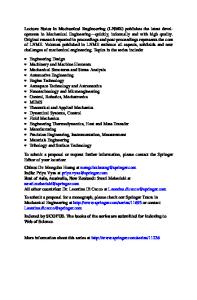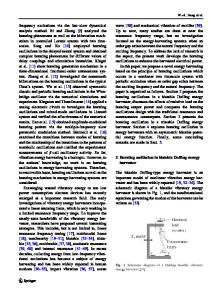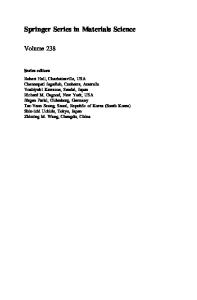Energy Harvesting From PZT Nanofibers
- PDF / 677,147 Bytes
- 6 Pages / 612 x 792 pts (letter) Page_size
- 75 Downloads / 425 Views
1034-K11-06
Energy Harvesting From PZT Nanofibers Shiyou Xu1, and Yong Shi2 1
Mechanical Engineering, Stevens Institute of Technology, castle Point on the Hudson, Hoboken, NJ, 07030 2
Mechanical Engineering, Stevens Institute of Technology, Castle Point on the Hudson, Hoboken, NJ, 07030
ABSTRACT In this paper, we demonstrated that Lead Zirconate Titanate (PZT) nanofibers can be used to harvest energy from dynamic loading and mechanical vibration. PZT nanofibers were fabricated by electrospinning process. SEM image of PZT nanofibers has shown that the average diameter of these fibers is about 150nm, which can be tuned from 50nm to 200 nm by varying the composition and viscosity of the precursor for electrospining. Titanium substrate with ZrO2 layer was used to collect the PZT nanofibers for the demonstration of energy harvesting from dynamic loading. The largest output voltage is 170mV under 0.5% strain; the frequency of the output voltage is the same as that of the input loading. Silicon substrate with trenches was used to collect the nanofibers for energy harvesting from vibration. The output voltage generated from 150Hz sinusoid vibration source has peak voltages of 64.9mV and -95.9mV. These experimental results suggest that PZT nanofibers have great potentials for energy harvesting from environments and being used as nanogenerators. Further study is under the way to optimize the design and improve the efficiency. INTRODUCATION Over the past few decades intensive researches have been carried out in developing various nanostructures for nanodevices such as nanosensors, which require a power source for portable or wireless applications. Conventional batteries are too large for a real integrated nanosystem, in addition, they normally need replacing or recharging. Novel nanoscale power source needs to be developed to meet the requirement of integrated nano/micro systems, wireless sensors and wearable devices. One of the promising ways is energy scavenging from environments using piezoelectric materials. Piezoelectric materials have received significant attention due to their capability to convert mechanical energy into usable electric energy and the flexibility of being integrated into a system. Piezoelectric nano ZnO has shown great potential to covert mechanical and vibration energy to electric energy by other research groups [1-4]. Lead zirconate titanate (PZT)-based ceramics, another piezoelectric material, are known for their excellent piezoelectric properties and are used in many actuator and sensor applications [5-7]. Monolithic PZT has a high piezoelectric (d33) coefficient and dielectric constant (K). These properties in turn dictate the piezoelectric voltage coefficient, g33, which is a very important parameter for energy harvesting applications[8].The g33 of PZT is much higher than ZnO’s, so the power output of PZT under same condition is expected to be higher than that of ZnO. The fabrication of 1-D PZT have been achieved by a few methods [9-11], but energy harvesting from 1-D nano PZT fiber has not be
Data Loading...











